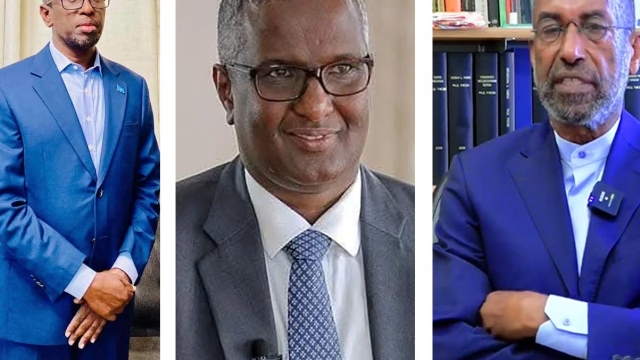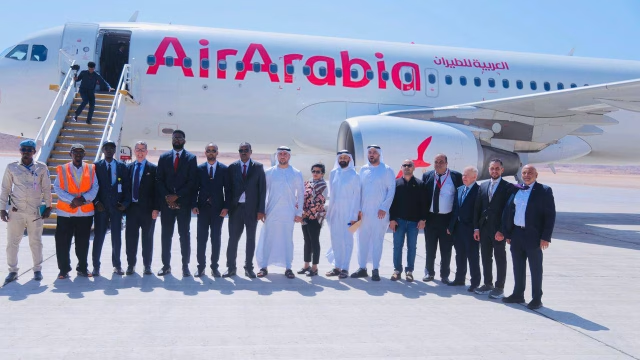Government fears interference from foreign aid agencies could destabilise development policy in a country hit by…
Government fears interference from foreign aid agencies could destabilise development policy in a country hit by conflict and the climate crisis – yet people are dying of malnutrition.

In Somalia, the word for famine is so little used that few people know it or its meaning; the word they use is simply abaar – drought.
Now, as the fifth failed rainy season draws near, the drought is the country’s worst in four decades, far worse than the one that had occurred by the time about a quarter of a million people died during the 2011 famine.
For months now, UN and aid agencies have been predicting that famine would be announced any day, in October, in December, and now early next year. “Famine is at the door,” said UN humanitarian chief Martin Griffiths in September.
But the F-word has become a point of political contention, and is deeply divisive in Somalia.
There is no argument that 7.8 million people are without enough food or that 1.3 million have had to leave their homes because of the drought and the conflict between al-Shabaab insurgents and the Somali army. Or that people are dying as a result.
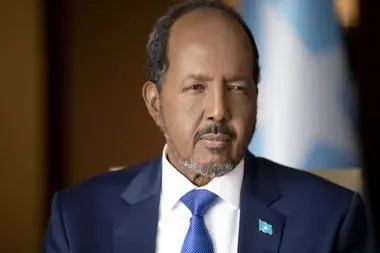
President Hassan Sheikh Mohamud, who was elected in May, has had Somali and African Union forces engaged in a determined offensive against al-Shabaab, the Salafi jihadist group. His government has been working to bring clan chiefs on side to halt the violence that strangles the country.
There is some optimism among Somalis that he has a good chance of achieving stability and there are already signs of a development strategy attracting investment into the capital, Mogadishu. Last month, Mohamud talked of a “risk” in declaring famine, worried that the international aid community would skew the government’s coordination capacity and see development money rerouted.
“Announcing or declaring a famine itself is a very difficult situation that does not affect the famine victims only but halts the development, changes the perspective on everything,” he said.
In October, Afyare Elmi, director of the Heritage Institute for Policy Studies in Somalia said the data was not there. “Nobody is saying people are not dying, people are dying. Don’t focus on debating the technicality.”
Around the town of Galkayo, which is split between two regions – Mudug to the north and Galmudug to the south – the population is rising steadily as a stream of families arrive at the 74 encampments for displaced people.
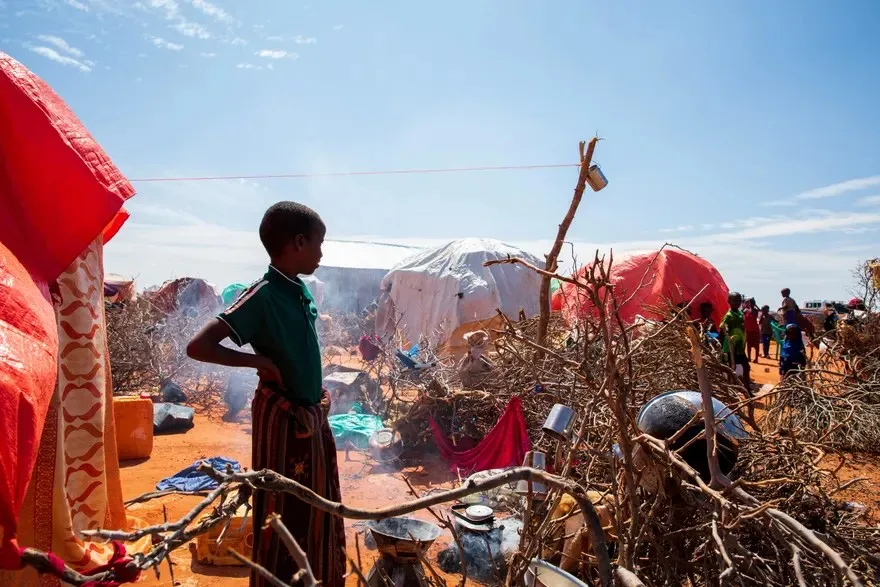
Drought turns people into wanderers, with little option but to leave dead animals and dried-up gardens behind to go in search of food and water. Conflict dramatically ratchets up that pressure to move, as fighting and killing envelop villages, and as al-Shabaab, which controls about 20% of the country, brings extortion and forced recruitment to communities. Displaced people are among the most vulnerable and mostly make up the estimated 300,000 people in Somalia already living in famine conditions.
In Galkayo, the rate of acute malnutrition among under-fives is 52%. The three markers for a declaration of famine in a region are for malnutrition to exceed 30%, for at least 20% of households to face extreme food shortages, and for two people in every 10,000 to die as a result of this every day.
In the town’s South hospital, Nimo Hassar rests on the mattress next to her tiny baby, Abdikadir. Their single bed faces the open door and a light but welcome breeze breaks through the heat. Hassar and her husband sold their last two surviving goats a few days ago to raise the money to get a ride here, where doctors may save their baby’s life. In Bud Bud, her village 150km away, Hassar has already cradled five children as they died.
“The oldest child I lost was two – he was Mohammed. The youngest was two months. The girls I lost were Abshiro, Farhi, Noura and Habiba. Three died close to each other, then later two.
“Before the drought, I could feed my children, now there is no food and the animals have been wiped out,” she says. This is not “normal drought”, she adds. “The 2011 drought was bad but this is worse.
“I am aware that other children are dying in my villages and other villages, there are too many to count.”

The gathering of data on deaths and malnutrition levels is down to the UN’s Food Security and Nutrition Analysis Unit-Somalia (FSNAU). A famine declaration carries no binding obligations, but serves to focus global attention on the problem. The UN wants that attention for Somalia, in the hope of driving up funding for the drought response for the region, which is only 50% funded.
But many in Mohamud’s government worry that being overrun by international actors, even those who want to save lives, will mean a loss of autonomy and bring political destabilisation, fearing that the money coming into Somalia to help development could be diverted to emergency programmes that both skew where people move to, and give the militias a new target.
Foreign interventions can come at a cost to a new government trying to combat an insurgency from a group that is “the second biggest employer in Somalia”, as one UN observer said wryly.
If they cannot regain the land controlled by al-Shabaab, people in those occupied areas will probably starve. In 2011, al-Shabaab did not let aid in or allow people out.
“The UN want to declare a ‘pocket’ of famine but it is still a projection. Whether the data is real or whether the threshold has been met, the UN says we will not grab any attention unless we declare. They don’t want to wait to miss the end of the fifth rains. But there is no guarantee any financing will be there either way,” says Abdirahman Abdishakur Warsame, the presidential envoy for Somalia’s drought response.
“There is doubt about the figures, the UN has always had the upper hand and controlled the data, and for now our data collection is nascent.”
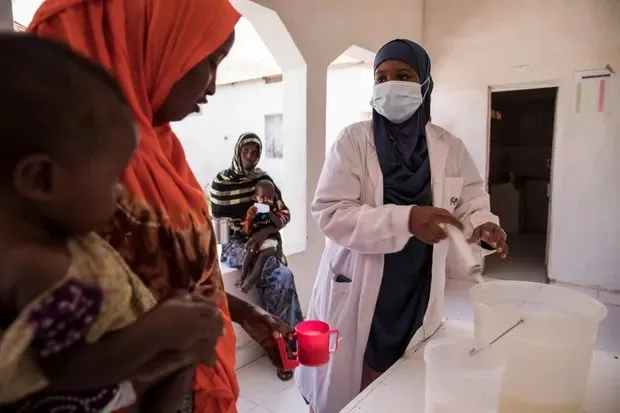
He says Somalia deserves international attention on all its challenges, especially for a drought induced by a climate crisis it did nothing to cause. “We are trying to defeat an ideology, but climate causes conflict – people are fighting over water, over grass, the shortage of resources that creates this ideology is made worse by climate change.”
However, he says: “The Somali government has a responsibility to protect their citizens, so if the data is there then the government has to declare. That is my position, if people are dying of hunger then we need international help.”
Somalia is attracting successful businesses, and new coffee shops are opening in Mogadishu, but it is feared the global recession and steep rise in food prices could badly affect that and the estimated $1.6bn (£1.3bn) a year in remittances from the diaspora to support family and friends.
But while the F-word sparks anxiety in Somalia over the implications, displacement camps and hospitals deal with the reality of people like Nimo Hassar.
“I don’t know if Abdikadir will make it or not,” she says. “Allah gives and Allah takes away. What can I do?”
Abdikadir weighed 3.7kg when he was admitted two days ago and now weighs 3.9kg, still half the expected weight for a seven-month-old. It is relatively simple to reverse acute malnutrition provided there are no complications. Sachets of the ubiquitous Plumpy’nut protein paste and therapeutic milk solutions work swiftly and the doctors here expect Abdikadir to survive this time. The hard bit is getting the children to the treatment or treatment to the children.
A few miles from the hospital, at Degaan, one of the 74 IDP camps that have sprung up on the flat dry plains around Galkayo, the Guardian saw mothers sharing a single sachet of their babies’ Plumpy’nut with older children who have nothing to eat.
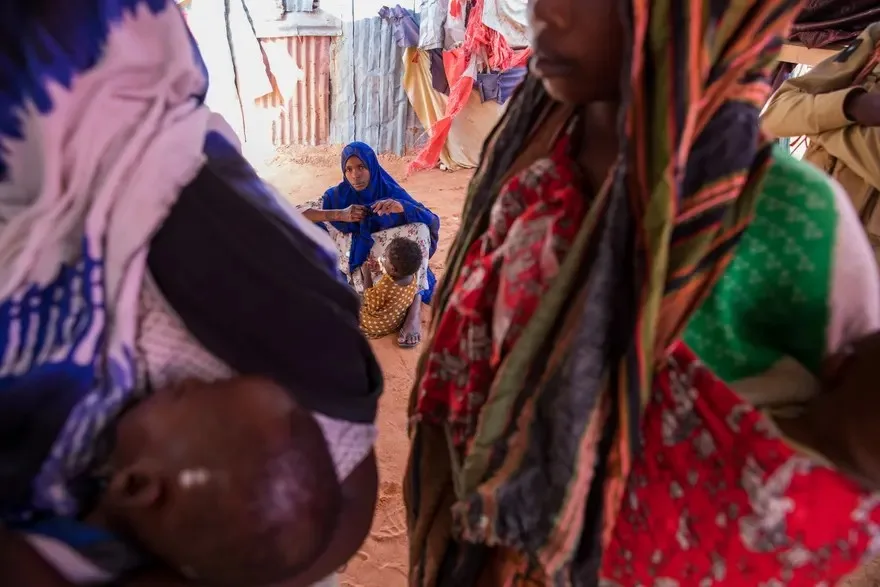
“That happens all the time,” said Dr Abdinur Abdullahi, who is working with a small medical team at Degaan. “There is very bad malnutrition here. We’re also seeing high rates of strokes too. Trauma is high. The number of new arrivals is high.”
Three nights before, Nafiso Mohamed Osman arrived here from one of the IDP camps further south, near Somalia’s capital.
“I came from Mogadishu due to the explosions and drought,” she says. Like many women in the camp she is on her own, her husband has gone and she has eight children. Some of the absent fathers are fighting, others have deserted families they can no longer support.
“I’m very scared and feeling nauseous from the hunger,” she says. “I know no one here and I didn’t know before I came that there is no food here either but at least there are no explosions. I wanted to keep the children safe.”
She doesn’t believe famine is possible because yesterday she ate, after she was given rice by another woman. “Famine is when people do not eat.”
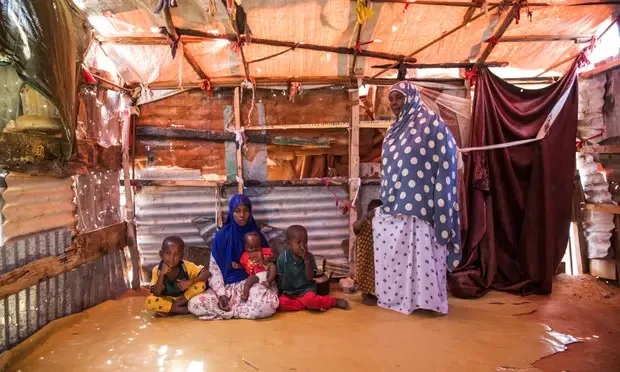
A group of women gather around her, trying to help her find a place to stay. Rents of $20 a month have to be paid here, and the government has been negotiating with landowners so displaced people are not evicted from the areas they are settling on. But the people who threw together the shelters from corrugated metal sheets and old sticks of timber are looking for money. Building materials are sparse and expensive.
Deka Mohammed’s 14-month-old daughter died from malnutrition on the way from the Ethiopian border. As she tells her story, her five friends look down at their own thin-armed babies. “We are worried of course,” says one, Ismahan Aadam. “We came here looking for a community and for food. We are afraid our babies will die. The biggest happiness would be to be told this baby does not have malnutrition and that Allah has sent our children something to eat.”
Like so many of the displaced women, they have been abandoned by husbands. “They are distressed not to be able to bring food and so they divorce,” says Aadam.
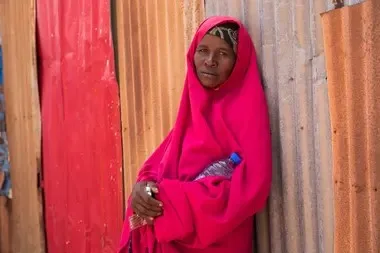
Aagilo Dirie Mahati lost her husband in September. “He died of hunger, because there was no food during the fighting and if we got [food], we fed the children first,” she says. “Now I’m here, I have to sleep outside and we have nothing.
“We just try to sleep but you come and stay the night with us and see how it is to try to sleep when you are hungry.”
In Mogadishu, long time presidential adviser Liban Obsiye says the current president is trying to repair Somalia’s long history of bad governance while tackling the climate crisis and al-Shabaab, as the country faces “the biggest development and humanitarian risk”.
“Some don’t want famine declared because they think state resources will be diverted. That is not the case, but you can understand the worries – that future aid coming in will run riot over a complex country that needs sustainable solutions,” he says.
“No one wants to return to old NGO-run policies dictated by their foreign donors and the Somalia voice is missed.”
Source: The Guardian
